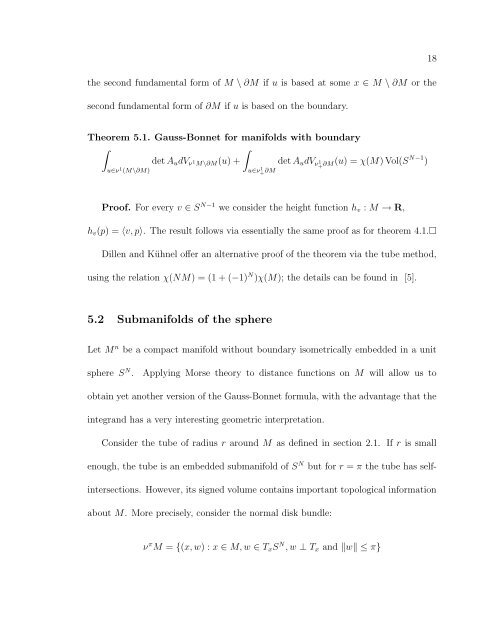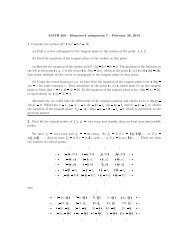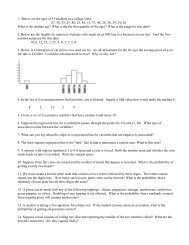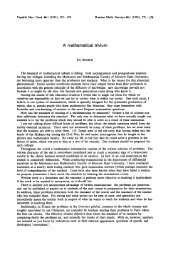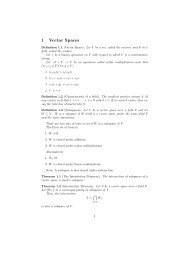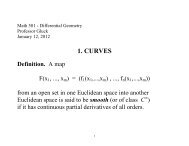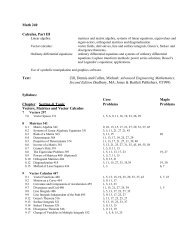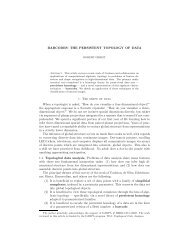MORSE THEORY AND THE GAUSS-BONNET FORMULA Alina ...
MORSE THEORY AND THE GAUSS-BONNET FORMULA Alina ...
MORSE THEORY AND THE GAUSS-BONNET FORMULA Alina ...
You also want an ePaper? Increase the reach of your titles
YUMPU automatically turns print PDFs into web optimized ePapers that Google loves.
the second fundamental form of M \ ∂M if u is based at some x ∈ M \ ∂M or the<br />
second fundamental form of ∂M if u is based on the boundary.<br />
Theorem 5.1. Gauss-Bonnet for manifolds with boundary<br />
�<br />
�<br />
det AudVν1M\∂M(u) +<br />
u∈ν 1 (M\∂M)<br />
u∈ν1 + ∂M<br />
det AudVν1 + ∂M(u) = χ(M) Vol(S N−1 )<br />
Proof. For every v ∈ S N−1 we consider the height function hv : M → R,<br />
hv(p) = 〈v, p〉. The result follows via essentially the same proof as for theorem 4.1.�<br />
Dillen and Kühnel offer an alternative proof of the theorem via the tube method,<br />
using the relation χ(NM) = (1 + (−1) N )χ(M); the details can be found in [5].<br />
5.2 Submanifolds of the sphere<br />
Let M n be a compact manifold without boundary isometrically embedded in a unit<br />
sphere S N . Applying Morse theory to distance functions on M will allow us to<br />
obtain yet another version of the Gauss-Bonnet formula, with the advantage that the<br />
integrand has a very interesting geometric interpretation.<br />
Consider the tube of radius r around M as defined in section 2.1. If r is small<br />
enough, the tube is an embedded submanifold of S N but for r = π the tube has self-<br />
intersections. However, its signed volume contains important topological information<br />
about M. More precisely, consider the normal disk bundle:<br />
ν π M = {(x, w) : x ∈ M, w ∈ TxS N , w ⊥ Tx and �w� ≤ π}<br />
18


